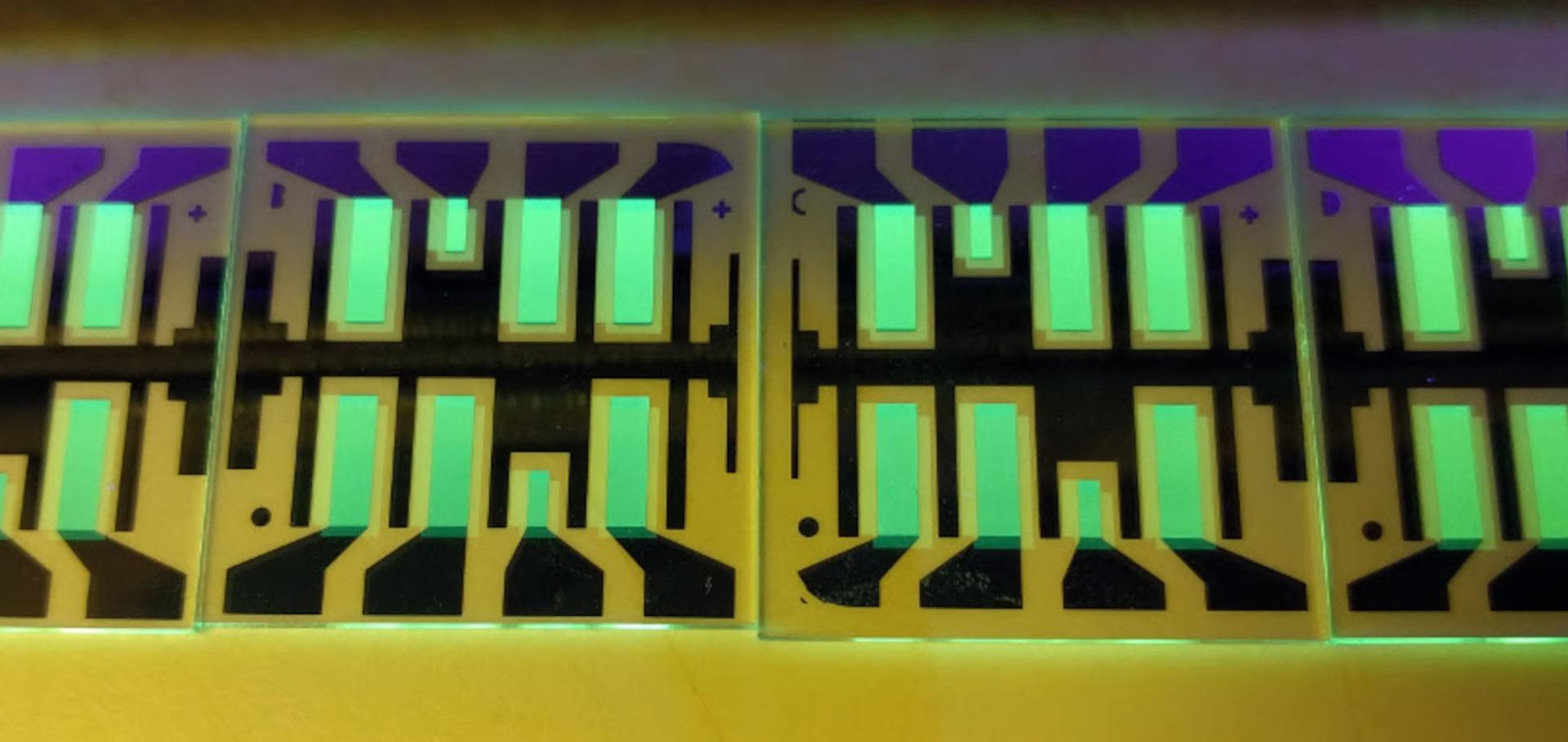Simple technique for determining the refractive index of phase-change materials using near-infrared reflectometry
Optical Materials Express The Optical Society 10:7 (2020) 1675-1675
Simple technique for determining the refractive index of phase-change materials using near-infrared reflectometry
Optical Materials Express 10:7 (2020) 1675-1686
Ultrafast Charge Dynamics in Dilute-Donor versus Highly Intermixed TAPC:C60 Organic Solar Cell Blends.
The journal of physical chemistry letters (2020)
Abstract:
Elucidating the interplay between film morphology, photophysics, and device performance of bulk heterojunction (BHJ) organic photovoltaics remains challenging. Here, we use the well-defined morphology of vapor-deposited di-[4-(N,N-di-p-tolyl-amino)-phenyl]cyclohexane (TAPC):C60 blends to address charge generation and recombination by transient ultrafast spectroscopy. We gain relevant new insights to the functioning of dilute-donor (5% TAPC) fullerene-based BHJs compared to molecularly intermixed systems (50% TAPC). First, we show that intermolecular charge transfer (CT) excitons in the C60 clusters of dilute BHJs rapidly localize to Frenkel excitons prior to dissociating at the donor:acceptor interface. Thus, both Frenkel and CT excitons generate photocurrent over the entire fullerene absorption range. Second, we selectively monitor interfacial and bulk C60 clusters via their electro-absorption, demonstrating an energetic gradient that assists free charge generation. Third, we identify a fast (< 1 ns) recombination channel, whereby free electrons recombine with trapped holes on isolated TAPC molecules. This can harm the performance of dilute solar cells, unless the electrons are rapidly extracted in efficient devices.In Situ Observations of the Growth Mode of Vacuum-Deposited alpha-Sexithiophene
JOURNAL OF PHYSICAL CHEMISTRY C 124:22 (2020) 11863-11869
Abstract:
© 2020 American Chemical Society. The real-time morphological evolution of vacuum-deposited α-sexithiophene (α-6T) on a weakly interacting (glass) substrate at ambient temperature is reported. In situ grazing-incidence small-angle X-ray scattering (GISAXS) enabled the observation of nanoscale aggregates, while in situ grazing-incidence wide-angle scattering (GIWAXS) allowed the study of the molecular-scale morphology. The in situ GISAXS measurements revealed that the α-6T growth proceeds via a Stranski-Krastanov mode, whereby 2-4 complete monolayers are deposited, followed by subsequent layers formed via island growth. In situ GIWAXS also showed the evolution of the polymorph composition during the thin-film growth. Initially, the disordered β-phase and the low-temperature (LT)-phase are deposited in nearly equal proportion until a thickness of 8 nm, whereby the LT-phase begins to dominate until a final α-6T thickness of 50 nm where the scattering intensity of the LT-phase is more than double that of the β-phase. The change in the polymorph composition coincided with an increase in the LT-phase d-spacing, indicating a lattice strain relief as the thin film moves from surface to bulk-mediated growth. The GISAXS findings were confirmed through direct imaging using ex situ atomic force microscopy (AFM) at various thicknesses, revealing the existence of both initial the initial and intermediate monolayers and final island morphologies. The findings reveal the real-time morphological evolution of α-6T across both the molecular scale and the nanoscale and highlight the role of strain in polymorph growth. Due to the importance of the thin-film microstructure in device performance, it is expected that these results will aid in the development of structure-property relationships necessary to realize the full potential of organic electronics.Efficiency enhancement of small molecule organic solar cells using hexapropyltruxene as an interface layer
JOURNAL OF MATERIALS CHEMISTRY C 8:14 (2020) 4909-4918


